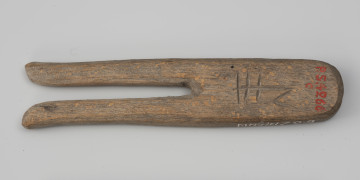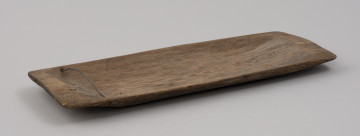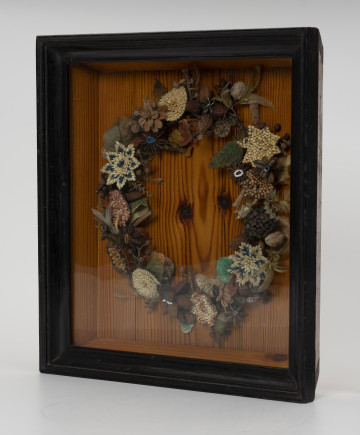
Buckle with ownership mark
1890 — 1950
National Museum in Szczecin
Part of the collection: Traditional fishing
Still in use in the first half of the 20th century, and now considered relict, basket fish cages are fishing trapping tools, known to people since the earliest times and were common over a considerable area, including outside Europe. The idea behind them is simple – the design allows the fish to enter freely, but prevents it from escaping from inside the basket. Basket fish cages are cone-shaped baskets woven from willow, hazel or birch twigs. Most are equipped with a funnel, also known as a throat, which is a funnel placed inside, at the opening, whose function is to keep the fish inside the trap. Braided basket fish cages were later made of netting. Two types of them can be distinguished: hooped cages, which have a rigid construction, and hoopless cages, which are net bags stretched over several hoops that can be freely stretched or folded. basket cages were made by the fishermen themselves, for their own use in catching various species of fish. They were set as separate traps or together with weirs, a kind of fence usually made of wicker, which blocked the fish's path and directed them to the inlet of the basket. The fisherman, after setting the lines and putting the bait in it, could leave it and attend to other duties. He would return after a certain amount of time, when in all probability there was already a fish inside the cage. The basket cage presented here comes from the area of Western Pomerania. It is shaped like an elongated cone. Originally, it was probably fitted with a door into which an opening was closed, through which the fish was removed. These have not survived to the present day. The object was in the collection of the pre-war Pommersches Landesmuseum in Stettin (1927-1945), the remains of which were incorporated into the collection of the current National Museum in Szczecin as former German property. Agnieszka Słowińska
Author / creator
Object type
eel trap (fish trap), trap
Technique
wickerwork techniques
Material
wicker, bast
Origin / acquisition method
acquisition
Creation time / dating
Creation / finding place
Owner
Muzeum Narodowe w Szczecinie
Identification number
Location / status

1890 — 1950
National Museum in Szczecin

1901 — 1949
National Museum in Szczecin

1890 — 1910
National Museum in Szczecin
DISCOVER this TOPIC
National Museum in Lublin
DISCOVER this PATH
Educational path